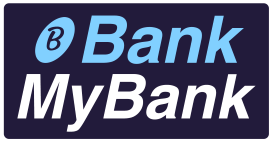The Federal Reserve is supporting a new quick payment service called FedNow. It gives financial organizations the option to accept payments from clients at any time. FedNow doesn’t take the place of PayPal or other apps like Venmo, Cash App, or Zelle. The service will only be accessible, though, if your bank chooses to participate. Let’s dissect it.
Describe FedNow
Customers at participating banks and credit unions will be able to send and receive money within seconds using FedNow, the Federal Reserve’s new instant payment service, 24 hours a day, seven days a week. In contrast to normal online transfers like those made through the Automated Clearing House (ACH) network, you might complete payments or transfers on the weekends, on holidays, and after banks close for the day. ACH transfers are typically completed in batches over the course of one to three business days.
Fed Chair Jerome Powell said, “What FedNow will do is enable all the banks—any bank in the United States—not just the big ones—to offer instantly available funds and real-time payments to their customers,” on March 8 before the House Financial Services Committee.
All banks and credit unions will have access to FedNow, but they are not required to sign up. FedNow cannot be used directly by customers, businesses, or non-bank payment processors, but it can be accessed through a partner financial institution. Neobanks, which aren’t banks, would have to collaborate with a participant bank.
Following its meeting on September 19–20, the Federal Reserve opted to hold the federal funds rate unchanged, making this meeting the second since the beginning of 2022 to do so. The Fed rate is currently between 5.25% and 5.50%, its highest level in more than 20 years, following 11 rate hikes since March 2022.
This rate, which commercial banks use to lend and borrow money from one another, last increased on July 26. It was a 25 basis point rise, or 0.25 percentage point.
Although this rate doesn’t directly affect certificates of deposit, it may have an indirect impact. You might see increased CD rates if the Fed raises interest rates. Let’s take a deeper look at how it functions.
Read More: How does Scan to Pay work?
Deposit certificates: 4% APY or higher
The finest short-term CDs (with periods of six to 18 months) continue to offer competitive rates, with annual percentage yields on CDs with terms of three months to five years remaining above 4%. The number of Fed rate increases plus the fact that CD rates haven’t been this high in a while assist in explaining why rates soared from 1% or less in January 2022 to their present highs in 2023. Online banks and credit unions typically have the highest rates.
Higher Fed rates translate into higher CD rates
The federal funds rate is a significant rate that the Federal Reserve, as the U.S. central bank, can affect, and it is one tool it uses to try to maintain economic stability. This is approximately the rate at which banks borrow money overnight. The Fed typically lowers rates to boost the economy and raises them to fight inflation.
Banks often set their interest rates for loans and savings accounts, including newly issued CDs, in accordance with the Fed funds rate. Therefore, higher Fed rates may lead to higher CD rates, but this is not a given and it takes time.
If your present savings account rates are close to 0% and not in any way assisting in the fight against inflation, rising CD rates can make CDs an alternative to explore. Around seven out of ten savers’ saving behaviors have changed as a result of inflation, or the rate at which prices of goods and services rise.
Read More: What is Ladli Beti Scheme and Benefits?
Do CD interest rates increase?
Yes, to answer briefly. According to a NerdWallet analysis, online banks and credit unions have some of the highest CD rates, with some one-year rates hitting 5% APY and higher. They have also significantly increased yields since mid-2021. Learn more about the CD rates at this time.
Rates began to rise for the majority of the banking sector in 2022. According to a NerdWallet review of rate information from the Federal Deposit Insurance Corp., national average CD rates for durations ranging from one to five years have risen above 1%. In contrast, despite Fed rate increases or decreases, some of the biggest U.S. banks have rarely changed their CD rates in years.




